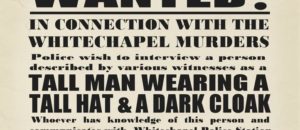John Wayne Gacy – Chicago, Illinois
John Wayne Gacy was an American serial killer and sex offender who murdered dozens of young men and boys in the 1970s, operating primarily in the Chicago area. His crimes, discovered in 1978, led to a high-profile trial and a death sentence that was carried out in 1994.
Key Facts
- Gacy was convicted of 33 homicides, the confirmed total attributed to him during the 1970s.
- He was widely associated with performing as a clown at community events, a detail that drew intense media attention.
- Law enforcement arrested him in late 1978 following an investigation into a missing teenager and subsequent evidence searches.
- He was tried and found guilty of multiple counts of murder and received a death sentence.
- Gacy remained on death row for approximately 14 years before being executed in 1994.
- Many victims were killed by asphyxiation; some were found buried beneath his house while others were recovered from a nearby river.
- The killings took place between roughly 1972 and 1978, concentrated in Chicago and surrounding suburbs.
- He targeted adolescent and young adult males, often luring them to his residence with offers of work or money.
- Gacy worked as a building contractor and was involved in local civic activities prior to his arrest.
- Psychiatric testimony and post-arrest evaluations portrayed him as exhibiting severe personality and behavioral disorders.
Crimes and Victims
Over a period spanning the early-to-late 1970s, Gacy murdered a significant number of adolescent and young adult males. He frequently used offers of employment, money, or social contact to gain the trust of victims and bring them to his home.
Investigators found the remains of many victims concealed in the crawl space beneath his house, while several others were recovered from a nearby river. Autopsies and case files indicated that most victims died from asphyxiation, and many showed signs of sexual assault prior to death.
Capture and Trial
Gacy was taken into custody in late 1978 after an investigation into a missing youth led police to search his property and vehicles. Evidence uncovered at the scene and during subsequent searches provided the basis for multiple murder charges.
The case proceeded to a high-profile criminal trial during which prosecutors presented physical evidence and witness testimony linking Gacy to the killings. He was convicted on numerous counts and sentenced to death; appeals and post-conviction proceedings extended his time on death row until his execution in 1994.
Psychology and Motives
Psychiatric assessments conducted during and after his trial described a pattern of antisocial behavior, pathological deception, and a lack of empathy toward victims. Experts testified about severe personality disturbances, though opinions varied about the extent and nature of any diagnosable mental illness.
Scholars and clinicians have suggested a combination of factors—sexual deviance, desire for control, and entrenched antisocial traits—contributed to his offending. Motive was not reducible to a single cause; rather, the killings reflected a complex interplay of behavioral, interpersonal, and sexual elements.
Background / Early Life
Born in the early 1940s in the Chicago area, Gacy had a working-class upbringing and entered adult life holding a variety of jobs, including work as a contractor. He became active in local community functions and civic organizations, which helped him cultivate a public persona at odds with his private conduct.
He married and started a family in his early adulthood, and later became known locally for volunteering and entertaining at events. These outward roles contributed to initial difficulties in detecting his criminal behavior, as neighbors and acquaintances often described him as a civic-minded individual.
Legacy and Media Coverage
The case generated sustained media interest and has been the subject of numerous books, documentaries, and dramatizations examining the crimes and the investigation. Coverage has explored both the factual record and broader questions about how such violence can remain undetected in a community.
Gacy’s crimes prompted discussions about police procedures for missing-persons investigations, the handling of sexual-offense evidence, and the portrayal of offenders in popular culture. The discovery of concealed victims in a domestic setting remains a central element of public memory surrounding the case.














